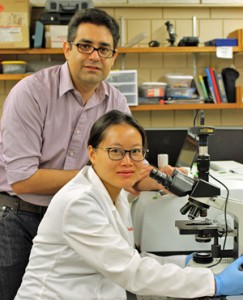A breakthrough invention in developing transient batteries has been developed: a self-destructing battery that completely dissolves in water without leaving behind any trace.
Researchers at Iowa State University have designed a one-millimeter-thick, five-millimeter-long and six millimeters wide battery that use typical lithium-ion technology. The transient battery is made up of eight layers, including an anode, a cathode and the electrolyte separator, all wrapped up in two layers of a polyvinyl alcohol-based polymer.
This battery can power up a desktop calculator capable of delivering 2.7 volts similar to electric potential generated by a conventional AA battery for 15 minutes and dissolve in water causing its nanoparticles to disperse.
Unlike conventional batteries, it’s cased in a degradable polymer composite made from a molecule that can form long repeating chains that swells and physically breaks apart when exposed to water.
It is the first transient battery to demonstrate the power, stability and shelf life for practical use.
In addition to being used for surveillance, military or environmental purposes, this self-destructing devices could also save patients the pain of removing a medical device, and allow environmental sensors to wash away in the rain, researchers said.
Montazami and his team recently published their discovery in the Journal of Polymer Science, Part B: Polymer Physics.
For more information, please visit: www.iastate.edu

